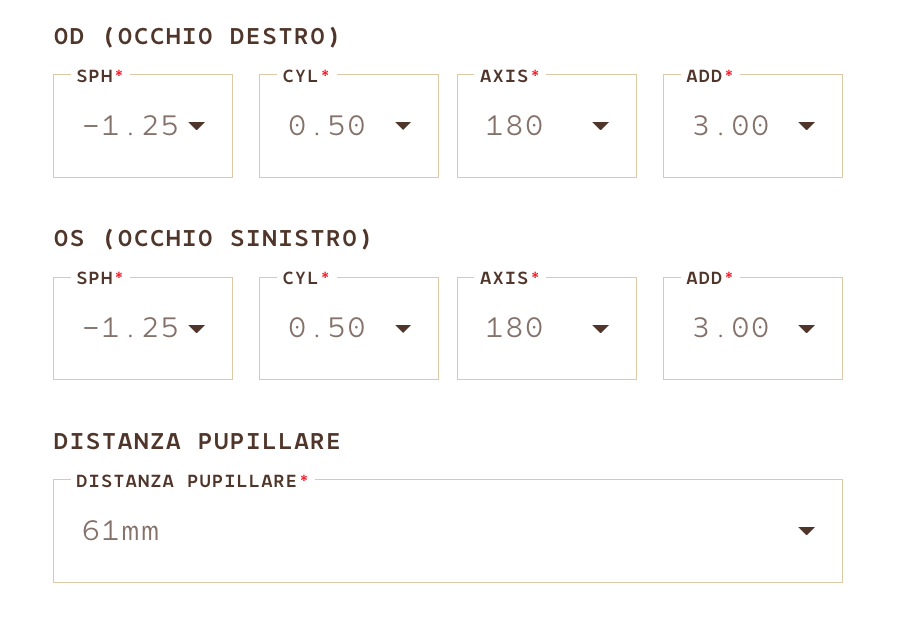How to read your prescription
If you have any questions about your prescription, you can contact our expert opticians at the following contacts:
Telephone:+390236578775
Whatsapp: +390236578775
Email: [email protected]
First, identify the measurement system used. The two measurement systems are TABO and INTERNATIONAL (INT), and usually in the prescription it is specified which one is used.
On our website the parameters for lenses and prescription glasses refer to the TABO measurement. *If your prescription was compiled according to the INT system, or you are unsure of the system used, before entering the parameters you can send us a photo or PDF document of your eye prescription at [email protected] to receive the conversion of the parameters from INT to TABO, or you can complete the order and send your prescription at a later time to the address [email protected]

Generally eye prescriptions are divided by:
– Right Eye
– Left Eye
– for near
– for close
For each eye, the following data is present on the prescription:
– SPH (or SF): indicates the corrective power of the lens prescribed for the correction of myopia or hyperopia, is preceded by the + (plus) sign for HYPERMETROPY and by the – (minus) sign for MYOPIA. The figure after the sign is the gradation that the lens has: the higher it is, the greater the defect you have. The term “Sphere” is used because the correction of these two visual disturbances is “spherical”.
– CYL (or CIL) and AXIS (or AX): indicate the correction of ASTIGMATISM, for which both are always required. In the column dedicated to the Cylinder, the value is preceded by the – (minus) sign for the correction of myopic astigmatism or by the + (plus) sign for hyperopic astigmatism. The value of the Axis column can range from 0 to 180 degrees, and indicates the orientation that the lens must have to work well.
– ADD (Addition or For Reading): this item indicates the necessary correction in case of near vision problems. The additional magnifying power is placed on the underside of the multifocal lenses to correct PRESBYOPIA. This parameter is always positive (+), even where the positive sign is not shown on the prescription.
NB: If the ADD value is not present in your prescription, simply calculate the difference of the SPH value: for example, if your SPH value for far is +1.25 and the SPH value for near is +4.25, the ADD value will be +3.00
To complete the prescription, another fundamental data is that of the INTERPUPILLARY DISTANCE, which indicates the distance expressed in millimeters (mm) that separates the two pupils.
So, according to what is written above, let’s fill in the online prescription according to the data shown in the example prescription:




